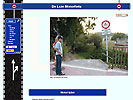When you ride individually, you can control your own speed, and are able to use your attention to look ahead and anticipate. In a group, that's different.
Is it possible to ride in a group in such a way that not only everybody is safe, but also that everybody is able to enjoy the ride? What are the pitfalls when riding in a group?
The rules described here have been tested many times...
![]() Er is een Nederlandse versie:
Er is een Nederlandse versie:
http://www.luiemotorfiets.nl/tips/groepsrijden/
Look in your mirror and wait!!!
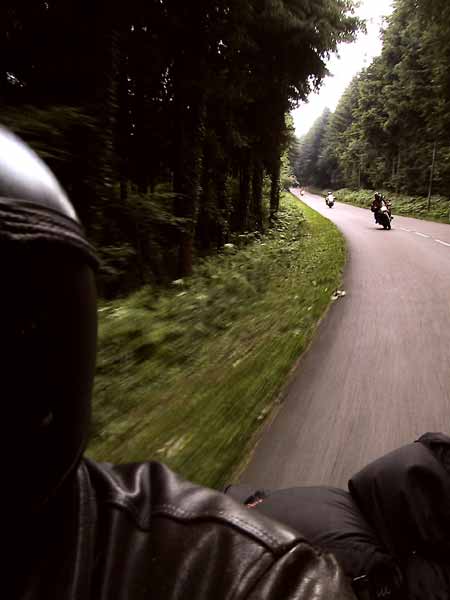
Check who's behind you
By far the most important thing to remember when riding in a group, is to check your mirrors from time tot time, to see whether the riders behind you are still there.
Stop
When you miss someone, stop! You can stop anywhere where you can do so safely, but you should stop in any case at the first turn in the route.
To be extra safe, always check three or four people behind you.
If you know that everybody will behave like this, you don't need to worry that you might loose the others, so you will be able to stop while knowing that the riders in front of you will stop as well.
Ride back
When the rider in front has stopped because people disappeared from his mirror, and he has waited so long that he knows something has happened, he should decide to ride back, to check what has happened. If there is trouble, everybody should be informed.
When some of the riders in the back decide to stop at a gas station or something like that, someone should, obviously, ride on, to inform the people who are waiting for them (and who might be worried about them).
Make small groups
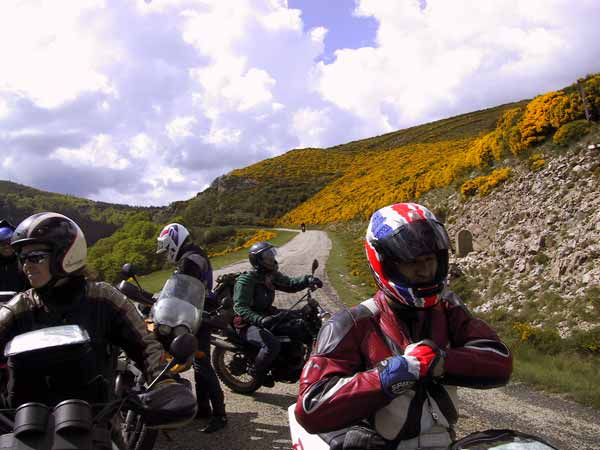
Not more than 5 or 6 riders
In most cases, it is adviseable to ride in several smaller groups, with their own riders-in-front. Those groups will meet when eating, drinking or tanking. An ideal number for a group is 5 or 6 riders.
In that case the fast ones, the slow ones, the social ones, the asocial ones, the-riders-who-are-always-out-of-gas, and the wrenchers are all able to ride in their own way, without frustration, and without getting in the way of others.
Tell each other
Of course, it is important to tell each other that there will be seperate groups!
So don' think, when the people behind you have disappeared from your mirror: " Oh, they did want to ride in a seperate group, they have their own route, don't they?"
Of course, it is not necessary to fill in forms in three-fold: everybody can tell the rider in front of him: "Go on, I have the route, I will form a group with the people behind me".
In front: an experienced rider
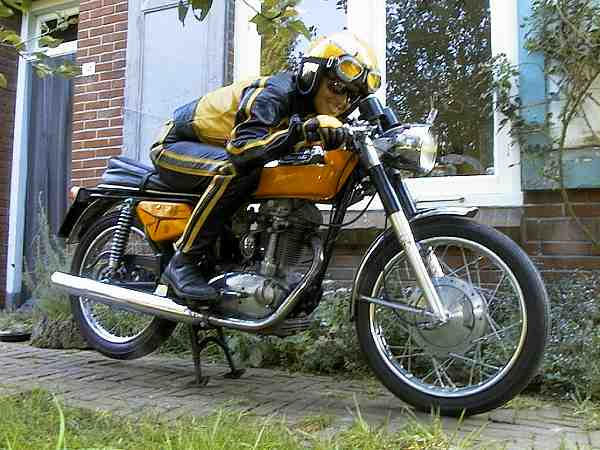
Experienced rider
The rider in front is always an experienced one. He should be able to read the route, ride with a speed that is comfortable for the riders behind him, and check his mirrors even more than the rest of the group to detect whether all his sheep are still there (just in case, for when one of them forgot the Most Important Rule).
On top of that, he is, together with the last rider, the sheperd's dog when somebody's lost.
Last rider
That last rider should preferrably knwo the route as well.
When you know who's the last rider, and when you know he or she knows the route,
it's easier to stop when you don't see the people behaind you anymore:
you know that the last rider will always be able to bring you "home".
keep your distance
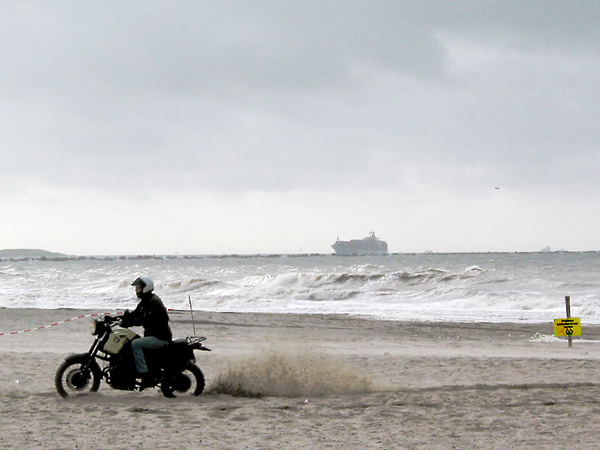
Not too close
Remember to keep your distance, especially when riding behind the first rider. He (or she) might suddenly detect that he should turn left or right, and then a colision is not unthinkable.
People tend to ride closer onto each other in a group than they would do in other circumstances. It is not completely avoidable, but keep it in mind.
Speed: grant others their corners
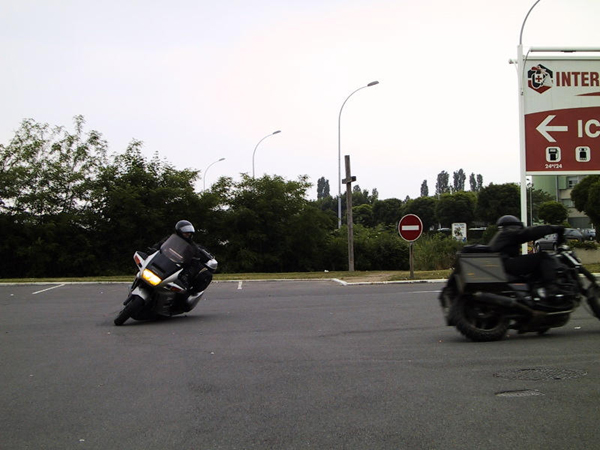
Ride your own speed
When touring with a group, remember that you should always ride at your own speed. When that speed is slower than the others ride, there's nothing to be ashamed of: everybody has different experiences.
You always know the others will wait for you, so there is no need to ride faster than feels comfortable.
Don't accelerate on straights
It is very common for riders in a group that they accelerate on the straights when they notice that they get behind in corners, to keep up. Don't do that! The corners will become more and more difficult for you when you ride that way.
When you notice that the rider behind you always has to brake in corners for you, or tailgates there, let him pass: slow down and hand signal that he may pass.
The only exception to this rule is the last rider in a group. It is recommendable that he is an experienced rider: together with the one in front, he is the sheep's dog, keeping an eye on everybody in front.
Behaviour: your own responsibility
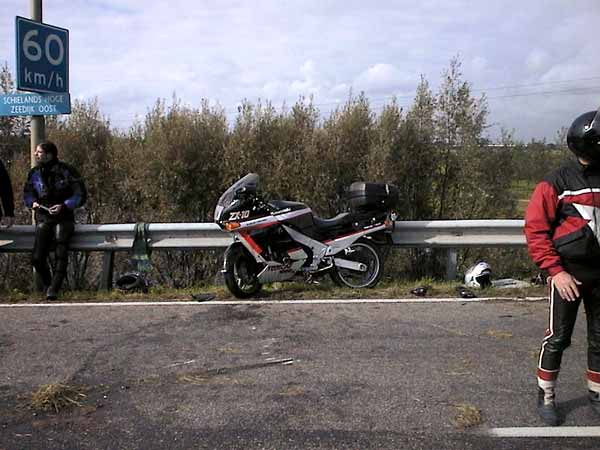
Behave like you would alone
Something that you should keep in mind, is that you are *always* responsible for your own behaviour, especially for your speed, when riding in a group.
The others race with 90 km/h or more through a residential area? Don't race after them, but just keep the speed that you think is responsible. That's possible because you know they will wait for you if you would lose sight of them.
The same applies for traffic lights: the riders in front of you ride through a red light, because the one in front was so stupid to give a bit of extra gas at an orange light? Simply stop!
Don't get so worked up that you go off the road in a bend!
Always keep watching for playing children, cars coming out of sidestreets, families on bicycles, GSMming looneys, etc.
Harmonica
Remember that there will be a harmonica-effect in the tail of a group, especially with riders in the front who accelerate on the straights: now and then you would have to ride 180 km/h to keep up. If you like it: enjoy! But if you don't: keep your own speed!
Overtaking
Concerning overtaking: don't follow the one before you blindly! If you lose the group, they will wait for you! Only overtake when *you* are able to see that it's poosible.
Watch out for getting too tired. It happens more easily than you are used when riding alone or with people you know closely, because you are constantly watching the movements of the others.
Stop: mind the other traffic
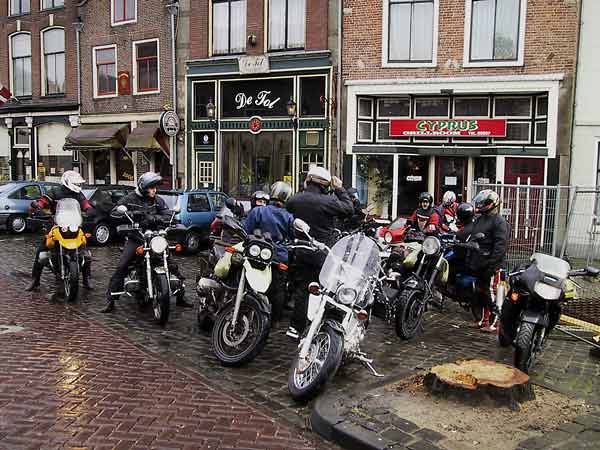
If you have to stop on the road, for whatever the reason is, do so in a manner that there is no extra risk.
So don't stop in the middle of the road, but put your bike on the shoulder, so the traffic can drive on without hitting anybody.
When you all stop at a café, watch out not to block parked cars, and of course make sure that the bikes don't hinder the traffic (and the people on foot).
Staggered formation when applicable
Staggered on long straights
On long straights, it works best to ride in a so-called staggered formation.
The one in front rides at the right side of the lane; the one behind him on the left side of the same lane, the one behind him on the right side, etc. That way everybody can see ahead.
Not in corners
In corners, you don't keep a staggered formation: everybody chooses their own line through the corner. So keep in mind that the rider in front of you will start in the outside of the corner.
The rider in front
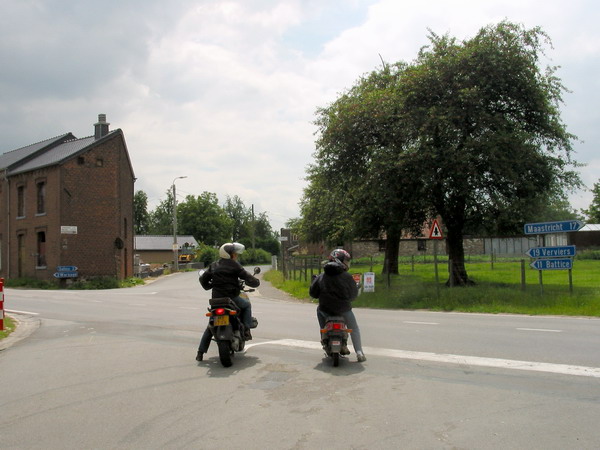
Make the day for who's behind you
In the first place, try to keep your speed comfortable and enjoyable for the people behind you. Whether that speed is rather slow or rather fast, is based upon your own observation of the group.
Check your mirrors even more often than the rest of the group should do, and try to count some extra headlights. Simply as a dubbelcheck, to ensure that people who get lost will be waited for.
Smooth
Try to ride smoother than you are used to. When you brake before a corner, the people in the tail of the group will almost come to a standstill because of the so-called harmonica-effect. When you accelerate hard out of a corner, the people in the tail will have to accelerate three times harder to keep up. So try to keep the same speed through corners as your speed at the straights.
Distances: short group trips
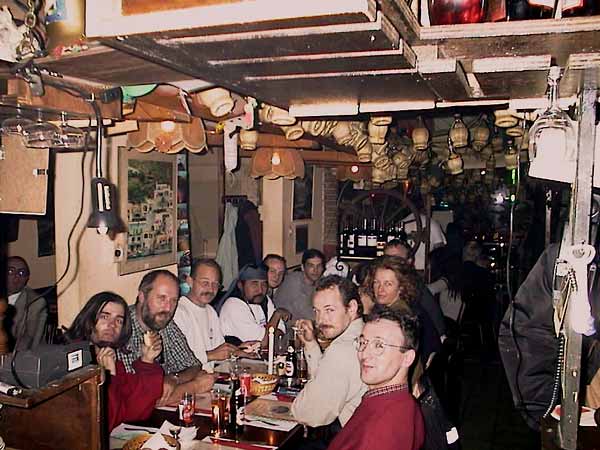
Short trips
These tips are meant for short trips, somewhere between 100 and 200 kilometers. We found out, in practising these tips, that everybody will enjoy the ride this way.
So, these tips are not meant for riding long distances, of a couple of hundreds of kilometers or more, in a group.
When riding such longer distances, the individual needs for pauses to drink, eat, buy fuel or rest, and the individual comfort-speeds, will vary too much. When people adjust their needs too much to the average needs in the group, the chances for trouble (people getting too tired and making mistakes) grow.
On top of that, the average speed will decrease with an increase of the number of people in a group, because you can only leave from any pause when everybody is ready for it.
Comments, Q & A, on a separate page




